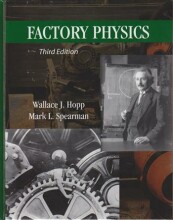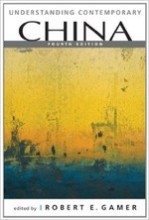INventory - Statistical Inventory Models
13 important questions on INventory - Statistical Inventory Models
Wilson (1934) breaks the inventory control problem into two distinct parts:
1: determining the order quantity
2: determining the reorder point
What parts do the news vendor, base stock and Q,r model solve?
News vendor: 1, order quantity
Base stock: 2, reorder point
Q,r: 1 & 2, order quantity & reorder point
In the news vendor model, what is the critical fractile formula?
Give 3 examples of types of stock-out costs.
Some examples:
1: Loss of profit through a loss of sales.
2: Loss of future sales as customers go elsewhere.
3: Loss of customer goodwill.
4: Extra costs associated with urgent, often small quantity, replenishment orders.
5: Cost of production stoppages caused by stock-out of WIP or raw materials.
(Can you see now why determining stock-out costs is often very hard in practice?)
- Higher grades + faster learning
- Never study anything twice
- 100% sure, 100% understanding
How is the inventory position defined?
Inventory position = on-hand inventory + orders - backorders
What are the definitions of on-hand inventory , orders and backorders?
On-hand inventory: physical inventory
Orders: resupply requests that are not yet committed to customers
Backorders: customer demands that have occurred but not yet filled
When does 1: net inventory, 2: on-hand inventory, 3: inventory position, go negative?
1: If backorders > on-hand inventory.
2: Never. On-hand inventory fluctuates, but can never go negative. (On-hand inventory => 0)
3: Never. Inventory position is held constant at r+1.
If we would use a stockout cost approach instead of a backorder cost approach for the base-stock model, we could rewrite 2.29 as Y(r)=holding cost+stockout cost. What would 2.30 then look like? (With k = stockout costs per unit and D = yearly demand)
Y(r)=h I(r) + k D (1 - S(r)) = h (r + 1 - theta) + k D (1 - phi((r + 1 + theta)/sigma))
John argues: "Using a base-stock model, if the service level is 90%, so if S(r)=0,9, then obviously B(r) must be 0.1, since if out of every 10 orders, 9 can be filled from stock, 1 must be backordered." Why is John wrong?
A shop buys and resells a certain product with an estimated daily demand of 500 products. The shop owner wants to use a base stock model to determine the optimal reorder level. Why is this a bad idea? Is there another model available the shop owner could use?
John also has a computer store. What is a reasonable distribution of the demand and why?
The Poisson distribution. Customers originate from a large population, and decide independently to computers a John's store.
John's friend Paul sells different types of bicycles. In order to control the inventory, Paul asks John to come up with a suited inventory model for each type of bicycle separately. John proposes the news-vendor model. Why is this model not completely correct?
Substitution effects are not taken into account: people can decide to buy a different type of bicycle in case their favorite type of bicycle is no longer available.
The news vendor problem, and its intuitive critical fractile solution, can be extended to a variety of applications that have more than one period. Name three features for such a common problem situation.
1. A firm faces periodic (e.g., monthly) demands that are independent and have the sam distribution G(x)
2. All orders are backordered (i.e., met eventually)
3. There is no setup cost associated with producing an order.
In relation to the news vendor model: If the demand is normally distributed, then increasing variability (i.e., standard deviation) of demand increases the optimal order (production) quantity if:
A: 1. Cs/(Cs + C0) > 0,5
2. Cs/(Cs + C0) < 0,8
3. Cs/(Cs + C0) > 0,8
4. Cs/(Cs + C0) < 0,5
and decreases it if
B: 1. Cs/(Cs + C0) > 0,5
2. Cs/(Cs + C0) < 0,8
3. Cs/(Cs + C0) > 0,8
4. Cs/(Cs + C0) < 0,5
Encircle the proper answer
A: 1. Cs/(Cs + C0) > 0,5
B: 4. Cs/(Cs + C0) < 0,5
The question on the page originate from the summary of the following study material:
- A unique study and practice tool
- Never study anything twice again
- Get the grades you hope for
- 100% sure, 100% understanding
































